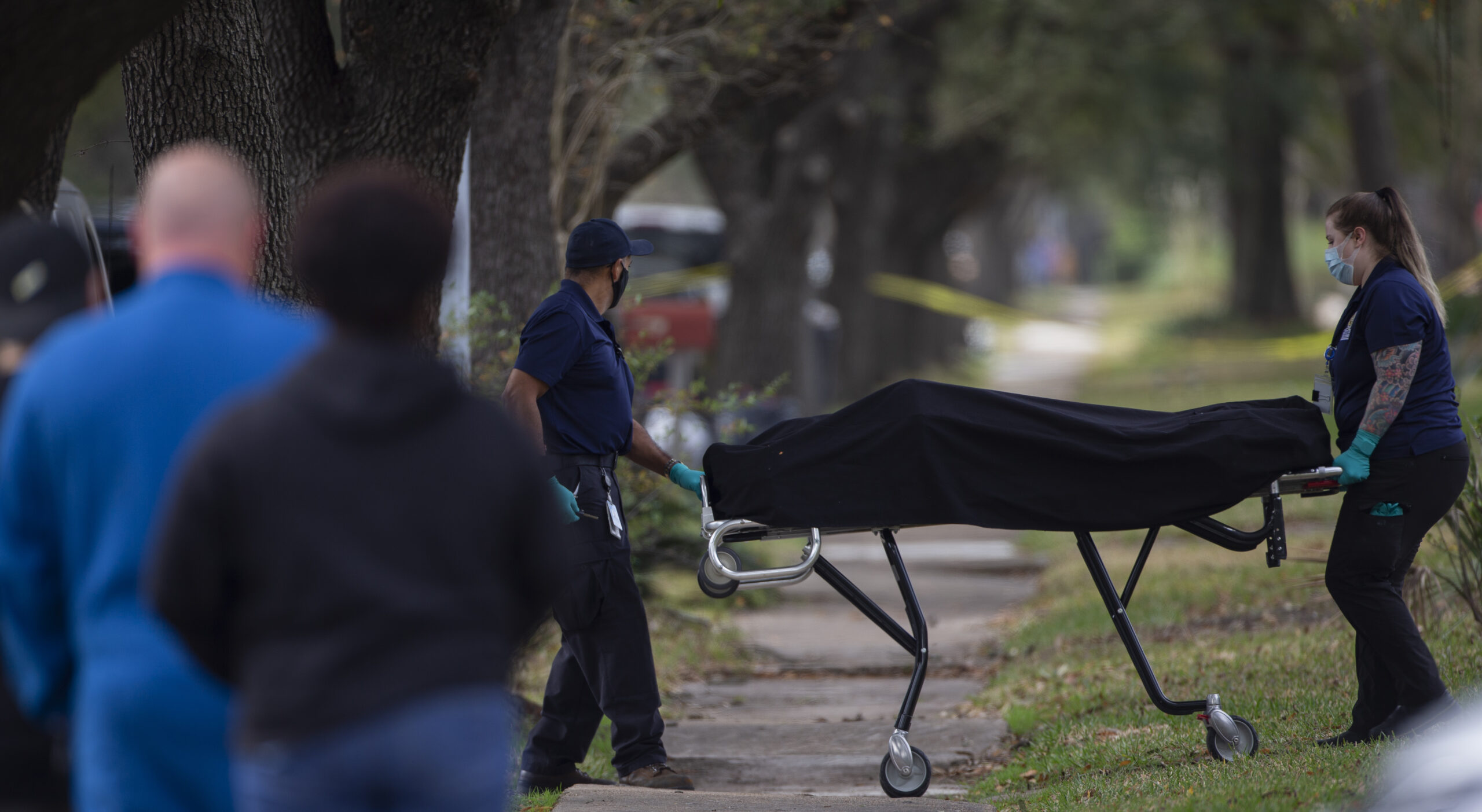
Domestic Violence Murders in Texas Are Going Up
A new report from the Texas Council on Family Violence analyzed hundreds of deaths in the Lone Star State.

Takara Hightower was talking with agents from the Naval Criminal Investigative Service (NCIS) at her home in Humble on September 22, 2022. Hightower, 34, was describing the ongoing violence she was experiencing at the hands of her husband, Gregory Hightower. Just days before, she had begun looking into filing a protective order. As she spoke, she held their infant in her arms, and the couple’s 3-year-old was nearby.
Her husband then came into the house, shot, and killed her in front of the officers and the children.
Hightower was one of at least 216 Texans killed in domestic violence homicides in 2022, according to a new report from the Texas Council on Family Violence (TCFV). The nonprofit coalition tracked and analyzed hundreds of homicides from 2022 and found it the second-highest number on record in the past 10 years, an 8 percent increase since 2021. The 216 victims included 179 women and 37 men, 17 people who were pregnant or had recently given birth, 19 teens and young adults, six people identifying as LGBTQ+, and 28 family members, friends, or bystanders.
The report also highlights the high number of victims who had sought help—from friends, family, or law enforcement—before being killed. More than half, including Hightower, “had taken steps to address the abuse,” according to the report. Most homicide victims were killed by current partners rather than exes. But leaving, experts agree, is often the most dangerous time.
Black Texans are disproportionately the victims in these cases, but everyone is vulnerable. The nonprofit found 22 percent of female victims and 38 percent of male victims were Black. According to the U.S. Census Bureau, only 13 percent of Texans are Black.
“We know that the immediate period around separation is the most dangerous time in an abusive relationship,” report author Sarah Hilderbrand said during a press event. “We share this to remind our partners in this movement that leaving does not always equal safety, and it is in fact an increasingly dangerous time for victims of domestic violence.”
Irma Moa, 65, was on the phone with a neighbor—talking about ending her relationship—when her husband Jose Fuentes shot and killed her in Houston on July 24, 2022. Afterward, officers responded to two welfare checks without entering the apartment. Moa wasn’t found until five days later; Fuentes remains at large.
Several victims were killed even after involving police. The nonprofit found that law enforcement had responded to previous incidents before the murders occurred in 21 cases.
In the end, the alarming numbers represent an undercount.
“We agonize over homicides not included in the report for technical reasons; as a result, we know the real number is higher,” writes TCFV CEO Gloria Aguilera Terry.
These homicides don’t happen in a vacuum—Texas law and Supreme Court decisions have the power to protect or imperil people at risk of domestic violence homicides.
Several laws passed during the 88th Legislative Session that improve what’s on the books to help people experiencing domestic violence—including ones that explicitly prohibit tracking as part of protective orders and ones that make it more difficult to find personal information about a person through data brokers or professional licensing boards.
But the U.S. Supreme Court has already handed down one decision that puts people at more risk—and is poised to decide on another this fall.
Murder was the leading cause of death among pregnant and postpartum people in the U.S. In 2022 alone, at least 17 Texas women were killed while pregnant or shortly after giving birth. The court’s decision in Dobbs v. Jackson Women’s Health Organization, which overturned the right to an abortion, and Texas’ sweeping abortion ban not only eliminate options for women, they can strand someone in a perilous situation with a dangerous partner, the report says
“Healthcare providers are a critical link to information and safety for pregnant and postpartum patients,” the report says. “Routine visits throughout pregnancy allow healthcare providers to build rapport, assess changes, and provide universal education to patients. Reducing options from healthcare providers adds to the barriers already prevalent for pregnant survivors seeking routine healthcare.”
Vicktoria Robles was six weeks pregnant when her boyfriend James Ochoa was arrested for assault. Robles was granted a protective order against Ochoa, and authorities seized his guns. But in February of 2022, just five months after the incident, a grand jury declined to indict him, and his guns were returned to him in March. On May 8, Ochoa shot and killed Robles in her Houston home and kidnapped their daughter.
Ochoa’s case grimly encapsulates two of the issues the Supreme Court holds in its hands: women’s health and gun rights. This November, justices will hear arguments about the constitutionality of prohibiting subjects of domestic violence firearms from owning guns. Earlier this year, the Fifth Circuit Court of Appeals ruled the law, which was created by the Violence Against Women Act, unconstitutional after a Texas man appealed a case in which he was found to violate his protective order by having and using a gun multiple times.
Advocates and experts have long sounded the alarm about the connection between the presence and availability of guns and domestic violence homicides. The vast majority of those killed in 2022 were shot—over 70 percent, the nonprofit found.



